
Research has shown that the oceans hold 16 times more carbon than the terrestrial biosphere, and that protecting the seas can be an effective way to combat climate change. Pictured, a humpback whale lunges for herring out of the cold waters of Lofoten, in Norway's northern fjords. Scroll through the gallery for more images of the ocean's extraordinary biodiversity.
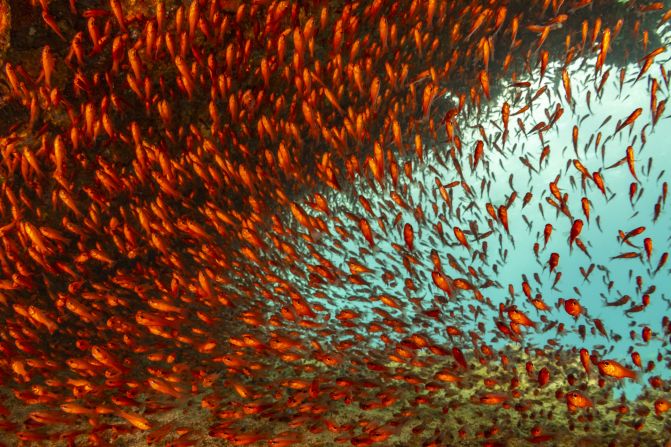
Conservationists are urging us to protect at least 30% of the sea by 2030. These red cardinal fish are pictured in the Galápagos Islands.
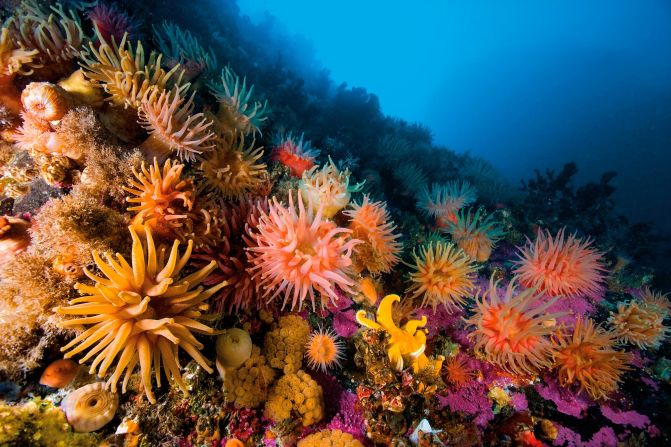
Strong currents, upwellings, and large tidal exchanges spread nutrient-rich waters up and down the coast of Svalbard, Norway, filling the sea with life.
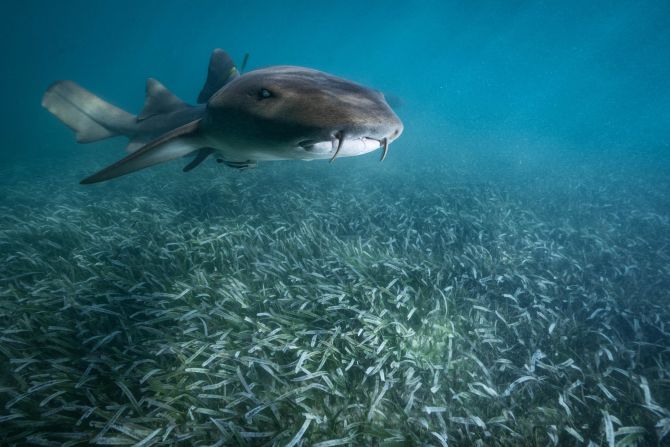
A tiger shark patrols a seagrass meadow off the Bahamas. Seagrass beds support a vibrant community of underwater creatures, as well as acting as powerful carbon sinks, stabilizing the ocean floor against erosion, and filtering out toxins from pollution. They are also a critical indicator of ocean health and highly sensitive to changes in water quality.
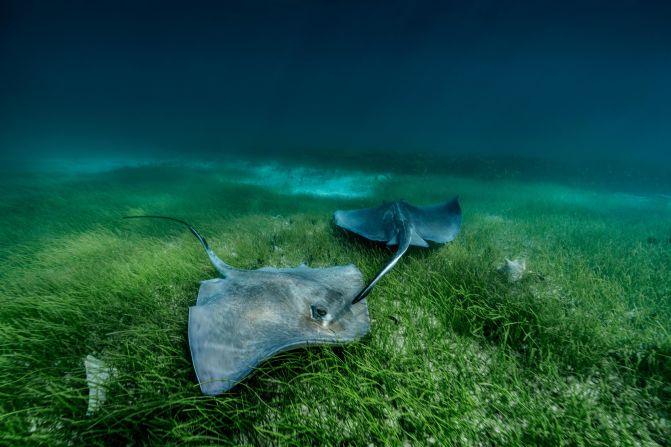
A pair of southern stingrays follow each other over The Grand Bahamas sea meadow. The roots of seagrass protect eroding coasts and their dense vegetation protects coastal communities from storms, as well as storing massive amounts of carbon.
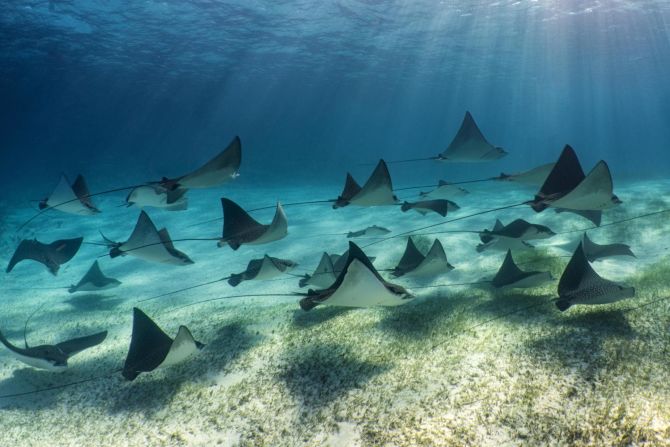
The coastal habitats of the Bahamas support a vibrant community of underwater creatures including eagle rays, dolphins, and many species of fish.
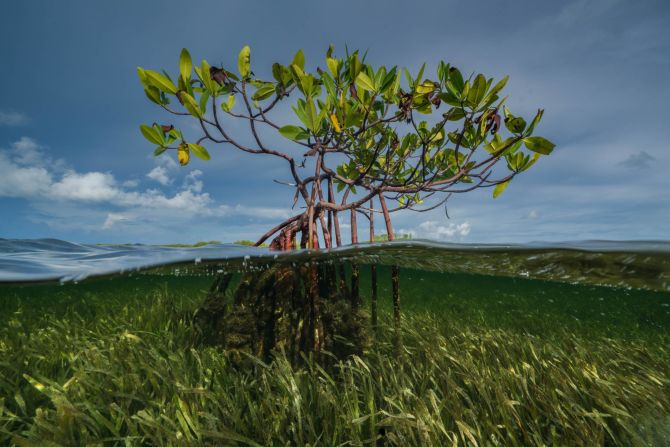
Mangroves, seagrasses and coral reefs are some of the most important ecosystems on the planet. Mangroves can store up to four times more carbon than a tropical rainforest.
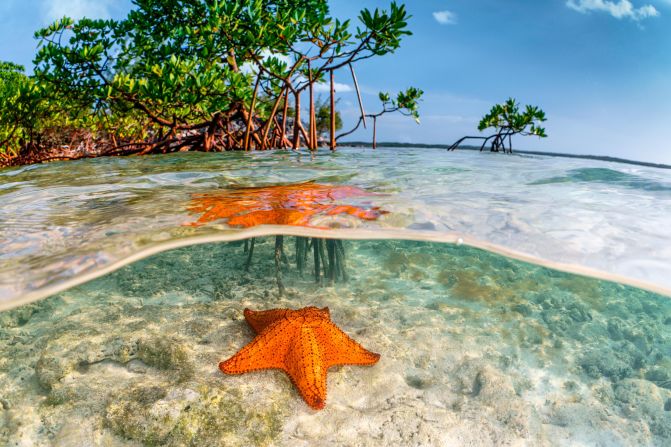
Carbon stored in the waterlogged sediment of the ocean, known as "blue carbon," is also less likely to break down and can remain trapped safely underground for thousands of years.
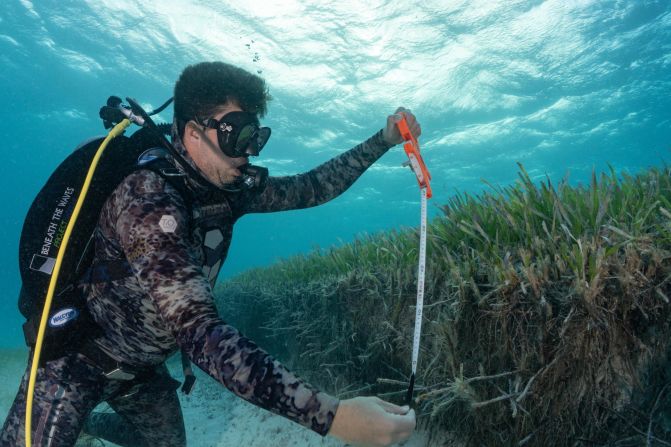
Dr Austin Gallagher from conservation non-profit Beneath the Waves is pictured taking data from a section of a newly discovered 93,000 square kilometer seagrass meadow, off the Bahamas.
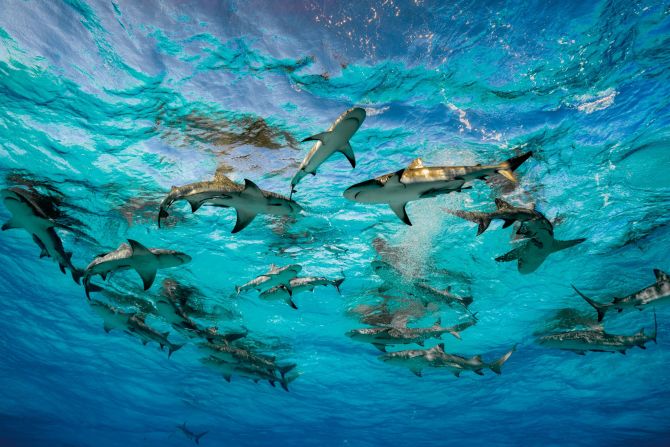
As a top predator, sharks keep our ocean's fish populations healthy, help disperse nutrients throughout the water column, and contribute to the health of coastal and even deep-sea habitats.
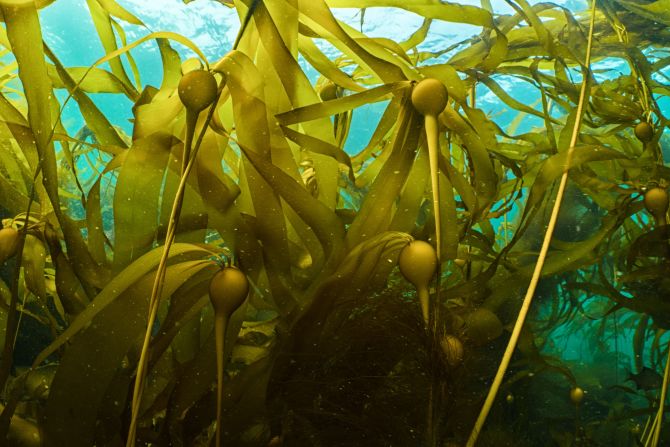
Kelp forests grow in cold, nutrient-rich water, and provide food and shelter for thousands of species. We can help maintain them by designating more marine protected areas, to limit the impact of overfishing



